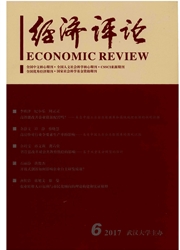

 中文摘要:
中文摘要:
市场情绪变化是影响股债关系的一个关键因素,在不同的市场环境下,市场情绪自身变化及其对股债关系的影响机制都具有很强的独特性,从而导致股债关系也具有明显的阶段性特征。通过对危机前后我国股债(国债和企业债)关系的实证分析,我们发现,对于国债来说,在危机前的股市牛市(熊市)中,股市的乐观(悲观)情绪会传染到债券市场,导致股债总体呈现正向关系并产生非对称性;危机爆发后,强烈的恐慌情绪使股债关系呈现“跷跷板”效应,随着市场恐慌的缓解和股市的反转,“跷跷板”效应减弱,但在股票牛市行情确立后,债券避险功能丧失,“跷跷板”效应再次增强;在股市震荡期内,无论危机前后的股债关系都比较微弱。而企业债只在危机爆发后熊市阶段,表现出与股市的“跷跷板”效应,其他状态下两者关系都比较微弱。
 英文摘要:
英文摘要:
Sentiment is an important factor to the relationship between stock and bond market. The evolution of sentiment and its influence mechanism is unique under different conditions, and induces the time -varying relationship between stock and bond. The article makes an empirical research by using Chinese data around Financial Crisis (including government bond (GB) and corporate bond (CB) ) and arrives at its own conclusion. The optimistic (pessimistic) sentiment spreads from stock market to GB market under bullish (bearish) market before the Financial Crisis, and caused the positive relationship and asymmetries. The market' s panic sentiment after the outbreak of Financial Crisis makes "Seesaw effect" conspicuous. With the market panic alleviated and the change from "bear" to " bull", the " Seesaw effect" weakens. However, as the " bull market" has been established, the "Seesaw effect" would be strengthened again. The correlation relationship is weak when the market is neither bullish nor bearish. The correlation between stock and CB is usually weak, but there is also "Seesaw effect" under bullish market after the Financial Crisis.
 同期刊论文项目
同期刊论文项目
 同项目期刊论文
同项目期刊论文
 期刊信息
期刊信息
